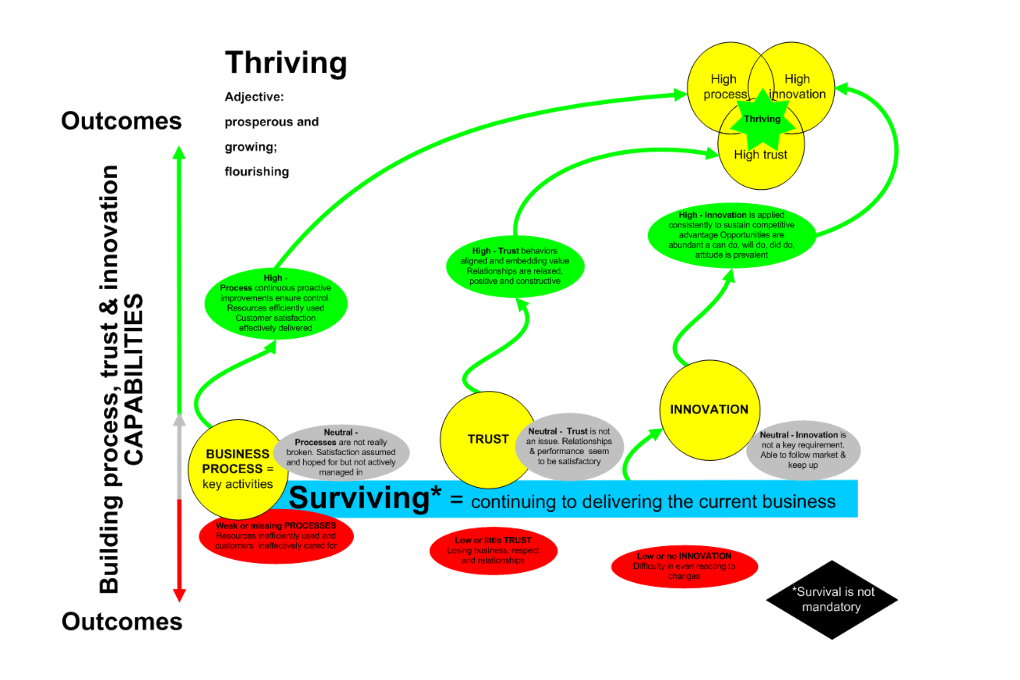Visual facilitation involves working with individuals, teams and groups.
It is not science and it is not prescriptive. It can mean a number of different things and can be approached in different ways. From finding a meaningful way to present or represent difficult or relatively impenetrable data, to encouraging strangers to become involved and to contribute ideas in a search for common understandings.
In a work environment, this can be a way to involve individuals within groups and teams to encourage everyone to become involved and to be heard and understood. When people are involved and engaged in the process, they are more likely to be bought in to the findings and outcomes.
Facilitation is about supporting them in getting their ideas openly expressed in dialogues. Helping them by creating tangible, visible, sharable outputs from meetings.
Visual facilitating can involve a number of different approaches.
Representing data: converting data into information to give it increased meaning and impact. This could be a one off for a significant presentation, or it could be as a digital output to a management team or sales team. Finding the significant meaning in the data and making sure the right people have it at the right time so that they can act on it.
Pre-structured visual facilitation: which means co-developing an agenda. Using unique, partially or fully pre drawn visuals to support the meeting themes, topics and agenda points and using them as tools to keep meeting on track, and as a record of outcomes. This is an activity that supports important meetings that need to have clear focus and attention running through them. The pre work supports the aganda development. The visuals give a framework to follow. The final visuals give a good taste of the content covered to anyone not in attendance and also give the story of the process followed and they act as a reference for meeting objectives and outcomes.
Structured visual facilitation: mean developing an agenda from pre defined visual templates, selected to guide the meeting and discussions towards desired meeting outcomes. This approach is best used to support creating the right focus in defining an agenda and in exploring the power and potential of visual thinking and working where a more certain and controlled outcome is needed. Simply put visual templates provide the scope of the topics to be discussed. Keeping within the frame of the visual keeps a discussion on topic. The content of the discussion will of course still be original and will make the final visual an original that matches to content and context of its creation. Using templates is a way of reducing the risk of wandering off topic and is a way ensuring the visuals don’t become lost or making them live, a distraction.
Real Treasure Map: this is a way to explore in depth the idea of value and what it will take to actually realise that value. It is a process that is unique to Aspects Consulting and comes as a result combining the experience of business process management, creating visuals to improve communication, the realities of working with agile project management, and a belief that the discipline of filtering and condensing important ideas into a single page, means that what remains is vital, significant and likely to be acted upon.
Whichever approach or combination of facilitation is chosen, the objective is to develop the dialogues that are generated into physically visually compelling images that convey the messages and stories that have been developed. It is these visual outputs that ultimately lead to informed, practical actions. Actions that result in making meaningful progress.
The results of visual facilitation are that problems and opportunities become more clearly defined and solutions and next steps more tangible and clearly actionable.
Diagrams, charts, freehand drawings. From an automated, digital, daily sales report, to a business process inventory map to a Real Treasure Map. If it can be made visual and it will create value for you, we’ll help you to create it.
Clear vision and informed actions. Foundations for successful outcomes.


